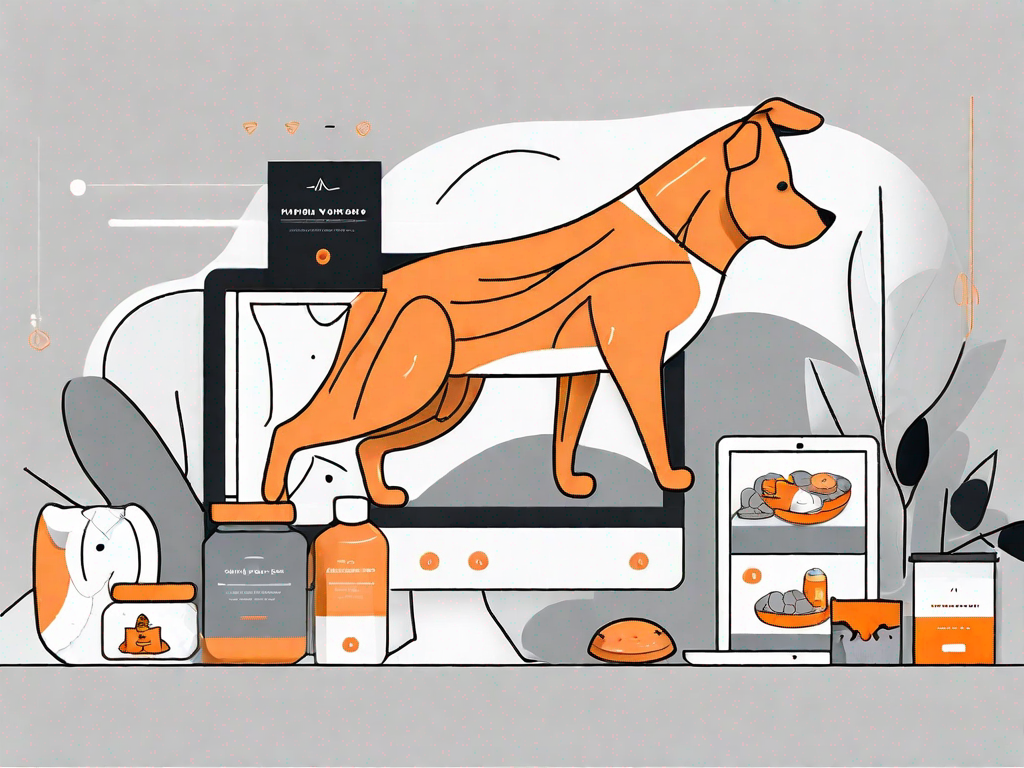.svg)
Design Strategy Template for Entertainment and Media: A Comprehensive Guide
.svg)

In today's fast-paced digital landscape, the design strategy plays a pivotal role in the success of entertainment and media businesses. Whether you are a media company looking to engage your audience or an entertainment platform aiming to stand out from the competition, a well-defined design strategy is crucial. This comprehensive guide will provide you with the insights and steps needed to create an effective design strategy for your entertainment and media endeavors.
Understanding the Importance of a Design Strategy in Entertainment and Media
Design strategy goes beyond just creating visually appealing elements; it encompasses a multidimensional approach that aligns with the brand's vision and goals. In the entertainment and media industry, where the competition is fierce, a design strategy can be the differentiating factor that sets a business apart from the rest.
The Role of Design Strategy in Media and Entertainment
In media and entertainment, design strategy goes beyond aesthetics; it shapes the overall experience that users have with a brand. From mobile applications to websites and promotional materials, a well-executed design strategy ensures consistency, credibility, and enhances user engagement.
Let's dive deeper into the role of design strategy in the media and entertainment industry. Imagine you are a user browsing a popular streaming platform. The moment you land on their homepage, you are greeted with a visually stunning layout that captures your attention. The colors, typography, and images are carefully chosen to create a sense of excitement and intrigue. This is the result of a well-defined design strategy.
But design strategy is not just about aesthetics. It also influences the functionality and usability of a platform. A good design strategy ensures that the navigation is intuitive, making it easy for users to find what they are looking for. It considers the user journey and aims to provide a seamless and enjoyable experience.
Moreover, design strategy plays a crucial role in establishing brand identity. It helps to create a unique and recognizable visual language that sets a brand apart from its competitors. Think about iconic logos like the golden arches of McDonald's or the bitten apple of Apple. These instantly recognizable symbols are a result of a well-crafted design strategy.
Why a Well-Defined Design Strategy is Crucial
A well-defined design strategy provides a roadmap for your brand's visual identity. It sets guidelines for creating a strong brand presence, fostering brand loyalty, and connecting with your target audience. Without a clear design strategy, your brand can easily get lost amidst the noise of competitors.
Let's take a closer look at the importance of a well-defined design strategy. Imagine you are a media company planning to launch a new streaming service. You want to position your brand as a premium provider of high-quality content. A well-defined design strategy will help you achieve this goal.
Firstly, it will guide the creation of your brand's visual elements such as the logo, color palette, and typography. These elements will be carefully chosen to reflect the premium nature of your brand and appeal to your target audience. For example, you may opt for a sleek and modern logo design with a sophisticated color scheme.
Secondly, a well-defined design strategy will ensure consistency across all touchpoints. From your website to your mobile app, social media profiles, and even physical marketing materials, your brand's visual identity will be cohesive and instantly recognizable. This consistency will build trust and credibility among your audience, making them more likely to choose your streaming service over competitors.
Lastly, a well-defined design strategy will help you connect with your target audience on an emotional level. By understanding their preferences, values, and aspirations, you can create a design language that resonates with them. This emotional connection will foster brand loyalty and encourage users to become advocates for your streaming service.
In conclusion, a design strategy is not just about creating visually appealing elements; it is a multidimensional approach that shapes the overall user experience, establishes brand identity, and fosters brand loyalty. In the competitive landscape of entertainment and media, a well-defined design strategy is crucial for standing out from the crowd and connecting with your target audience.
Key Elements of a Successful Design Strategy
Building a successful design strategy requires careful consideration of several key elements. Let's explore the crucial components that will help you create an impactful and memorable design strategy for your entertainment and media business:
When it comes to designing a strategy that will captivate your audience, there are a few key factors that you need to keep in mind. Understanding your target audience is paramount. You need to delve deep into their preferences, behavior, and demographics to create a design that truly resonates with them. By accurately targeting your audience, you can create a design strategy that speaks directly to their needs and desires.
But targeting your audience is just the beginning. To build a strong brand presence, consistency is key. Your design strategy should reflect your brand's core values, establishing a consistent visual identity across all platforms. From color schemes and typography to logo placement and overall design elements, maintaining brand consistency is vital to creating a cohesive and recognizable brand image.
However, a successful design strategy is not just about aesthetics. It also needs to be aligned with your content strategy. A well-crafted design strategy goes hand in hand with a strong content strategy. You need to carefully analyze your content requirements and plan accordingly to ensure that your design complements and enhances your messaging. This includes considering the layout, readability, and visual hierarchy of your content to engage and guide your audience.
Audience Understanding and Targeting
Before diving into the design process, it's crucial to have a deep understanding of your target audience. Research their preferences, behavior, and demographics to create a design that resonates with them. By accurately targeting your audience, you can create a design strategy that speaks directly to their needs and desires.
Understanding your audience goes beyond just knowing their basic demographics. You need to uncover their motivations, aspirations, and pain points. What drives them? What are their challenges? By gaining a deep understanding of your audience, you can create a design strategy that not only captures their attention but also connects with them on a deeper level.
Once you have a clear understanding of your audience, you can start tailoring your design strategy to meet their specific needs. Consider their preferences in terms of visuals, messaging, and user experience. By aligning your design choices with their preferences, you can create a design that feels tailor-made for them.
Brand Consistency and Visual Identity
Consistency is key when it comes to building a strong brand presence. Your design strategy should reflect your brand's core values, establishing a consistent visual identity across all platforms. From color schemes and typography to logo placement and overall design elements, maintaining brand consistency is vital to creating a cohesive and recognizable brand image.
But brand consistency goes beyond just visual elements. It also extends to your brand's tone of voice, messaging, and overall personality. Every design choice you make should align with your brand's identity and reinforce its unique qualities. This consistency helps to build trust and familiarity with your audience, making them more likely to connect with and remember your brand.
When it comes to visual identity, it's important to strike the right balance between creativity and consistency. While you want your design to stand out and be memorable, it should still be in line with your brand's overall aesthetic. Consistency in visual elements such as color palette, typography, and imagery helps to create a cohesive and unified brand experience for your audience.
Content Strategy and Planning
A well-crafted design strategy goes hand in hand with a strong content strategy. Analyze your content requirements and plan accordingly to ensure that your design complements and enhances your messaging. This includes considering the layout, readability, and visual hierarchy of your content to engage and guide your audience.
When planning your content strategy, it's important to consider the different types of content you will be creating and how they will be presented. Will you be using long-form articles, videos, or interactive elements? Each type of content requires a different design approach to effectively convey your message.
Additionally, you need to consider the user journey and how your design can guide your audience through it. A well-designed content layout can help users navigate through your website or app seamlessly, ensuring they find the information they need easily. By strategically placing call-to-action buttons and optimizing the visual hierarchy, you can guide your audience towards the desired actions.
Remember, a successful design strategy is not just about creating visually appealing designs. It's about creating a seamless and engaging user experience that aligns with your brand's values and resonates with your target audience. By understanding your audience, maintaining brand consistency, and planning your content strategy, you can create a design strategy that truly stands out and drives results for your entertainment and media business.
Steps to Create an Effective Design Strategy
Now that we have explored the key elements of a successful design strategy, let's delve into the practical steps involved in creating one that aligns with your entertainment and media goals:
Defining Your Goals and Objectives
Begin by clearly defining your goals and objectives. Identify what you hope to achieve through your design strategy, whether it's to increase user engagement, boost brand recognition, or drive conversions. Well-defined goals will serve as a guiding force throughout the design process.
Conducting Comprehensive Market Research
To create a successful design strategy, you need to have a comprehensive understanding of the market landscape. Conduct market research to identify industry trends, analyze competitors, and uncover opportunities. This research will inform your design decisions and help you carve out a unique space within the market.
Developing a Unique Brand Identity
A strong and unique brand identity is the foundation of an effective design strategy. Take the time to develop a brand personality that resonates with your target audience. Define your brand's values, tone of voice, and visual elements that reflect your brand identity. This will ensure consistency across all touchpoints and create a memorable brand experience.
Implementing Your Design Strategy
After careful planning and consideration, it's time to implement your design strategy. Collaborate with talented designers and developers to bring your strategy to life. Monitor and measure the performance of your design elements, making adjustments and refinements as needed to ensure optimal results.
Case Studies: Successful Design Strategies in Entertainment and Media
Examining successful design strategies from industry leaders can provide valuable insights and inspiration for your own ventures. Let's explore two notable case studies:
Case Study 1: Netflix's Design Strategy
Netflix, the leading streaming platform, has demonstrated the power of a strong design strategy. Through user-friendly interfaces, personalized recommendations, and intuitive navigation, Netflix has created a seamless user experience that keeps audiences engaged and coming back for more.
Case Study 2: BBC's Design Strategy
The BBC's design strategy focuses on delivering reliable news and content to its global audience. With a clean and minimalistic design, the BBC website ensures easy access to information, while maintaining a sense of credibility and trustworthiness.
In conclusion, a well-defined design strategy is imperative for success in the ever-evolving entertainment and media industry. By understanding the importance of design strategy, recognizing key elements, and following practical steps, you can create an impactful and memorable design strategy that resonates with your target audience. Learn from successful case studies and adapt their strategies to suit your own brand's objectives. Embrace the power of design strategy and elevate your entertainment and media business to new heights.
Related Posts
Let's
Let’s discuss how we can bring reinvigorated value and purpose to your brand.







.svg)